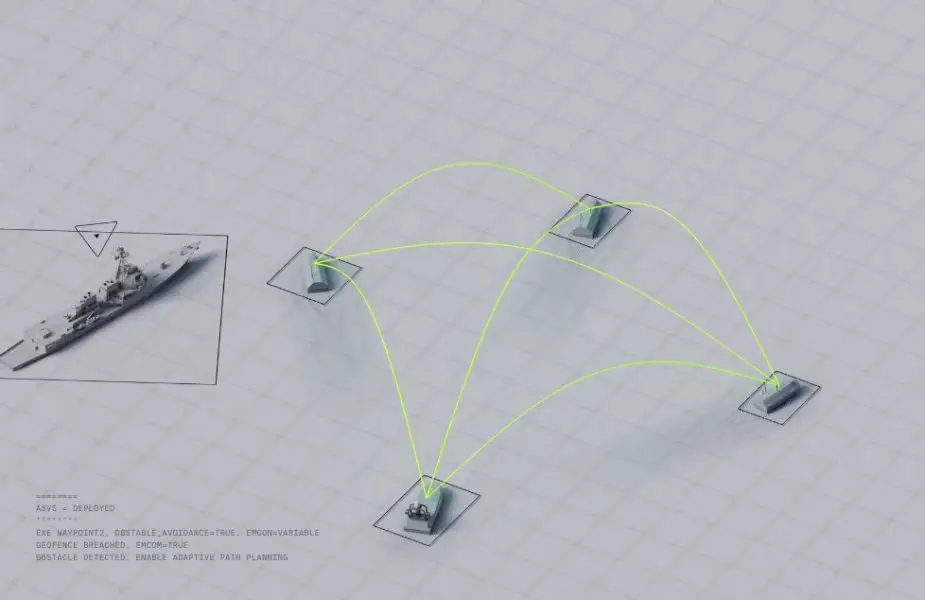Breaking news
Pentagon invests $1 Billion in Replicator drones to counter a Taiwan invasion.
The United States Department of Defense announced on March 11, 2024, an initial investment of approximately $1 billion to develop a fleet of small unmanned craft as part of the Replicator Initiative. Deputy Defense Secretary Kathleen Hicks revealed that the first, Replicator 1, addresses how to slow down or defeat an amphibious invasion of Taiwan with mass lethal surface drones and loitering munitions. The funding will be split across two budgeting periods.
Follow Navy Recognition on Google News at this link
 Cooperative, autonomous swarm drone concept using American company Saronic USVs (Picture source: Saronic)
Cooperative, autonomous swarm drone concept using American company Saronic USVs (Picture source: Saronic)
Firstly, $500 million will be requested through reprogramming or added as a late amendment to the finalized Fiscal Year 2024 appropriations bill. Another equal amount is allocated in the Fiscal Year 2025 budget, though specific details were not immediately disclosed, according to Pentagon Comptroller Michael McCord.
This initiative marks a broader shift by the Pentagon towards affordable, swarming drones capable of quickly delivering results and serving as a test bed for autonomy, moving away from more complex legacy drone programs. Hicks emphasized the trailblazing role of this project in reducing bureaucratic hurdles and speeding up the deployment of unmanned systems.
In January, the Defense Innovation Unit (DIU) selected the first batch of vehicles for the Replicator project, in collaboration with Hicks and the Vice Chairman of the Joint Chiefs of Staff, Admiral Chris Grady. Though not publicly announced, this selection is part of a deliberate conceal-and-reveal strategy, according to Captain Alex Campbell, DIU’s maritime director.
Additionally, DIU is developing software that will enable unmanned surface and aerial vehicles to swarm, autonomously detect threats, and then leave the final decision to strike a target to a human.
U.S. Pacific Fleet Commander Admiral Sam Paparo announced the establishment of a new squadron for small unmanned vessels in May, signaling a shift towards an operational capability directly managed by the military.
These developments coincide with the Pacific Fleet's experimentation with the "hellscape" concept, aligned with the goals of Replicator 1 to counter a Chinese invasion of Taiwan. The upcoming Integrated Battle Problem 24.1 in May will test some of the underlying concepts of small swarming unmanned surface vessels.
The ultimate aim is to shift the most dangerous and destructive functions of a complex operation, like repelling an invasion of Taiwan, from manned ships and submarines to unmanned and lethal machines. Paparo highlighted the effectiveness of this approach during his keynote speech at the West 2024 conference, advocating for the use of unmanned undersea, surface, and aerial capabilities to execute sea denial operations.

























